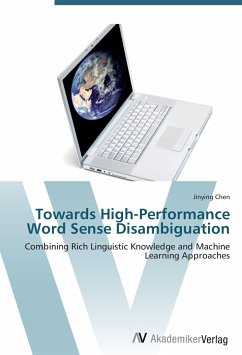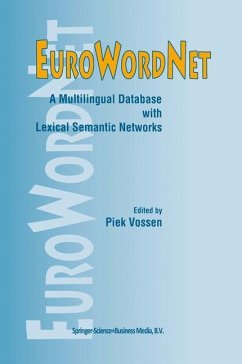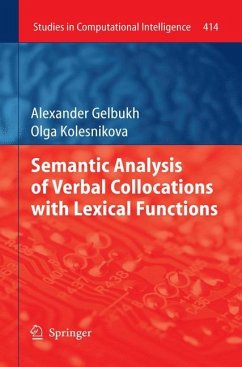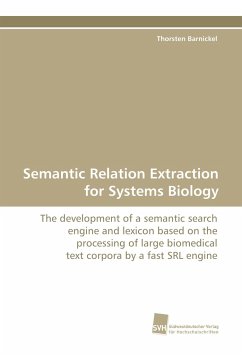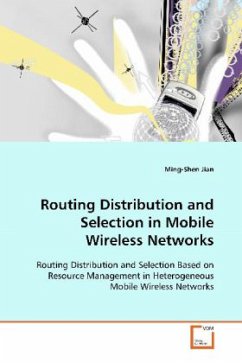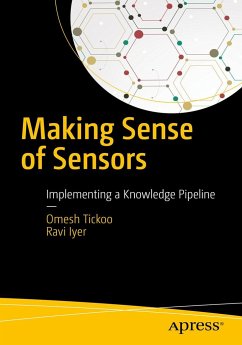
Lexical Semantic Similarity
Word Similarity in Semantic Networks and Distributional Structures
Versandkostenfrei!
Versandfertig in 6-10 Tagen
52,99 €
inkl. MwSt.

PAYBACK Punkte
26 °P sammeln!
In regards to computing lexical similarity, the twofundamental problems are respectively concerned withhow to explore concept relationships predefined andenumerated in lexical knowledge bases and how tostatistically induce and learn context relationshipsfrom word co-occurrences. To address these problems,this book focuses on approaching both taxonomicsimilarity through the semantic networks in WordNetand distributional similarity through syntacticallyconstrained context. The taxonomic similarity modelwe proposed outperforms most popular similaritymethods with respect to simulating human simila...
In regards to computing lexical similarity, the two
fundamental problems are respectively concerned with
how to explore concept relationships predefined and
enumerated in lexical knowledge bases and how to
statistically induce and learn context relationships
from word co-occurrences. To address these problems,
this book focuses on approaching both taxonomic
similarity through the semantic networks in WordNet
and distributional similarity through syntactically
constrained context. The taxonomic similarity model
we proposed outperforms most popular similarity
methods with respect to simulating human similarity
judgments. In relation to distributional similarity,
we thoroughly investigated the semantic properties of
grammatical relationships in regulating word
meanings, whereby over 80% precision can be reached
in extracting synonyms or near-synonyms. This book
provides a systematic guidance on computing taxonomic
similarity and distributional similarity. It is
appropriate for system developers and researchers
working in language technology.
fundamental problems are respectively concerned with
how to explore concept relationships predefined and
enumerated in lexical knowledge bases and how to
statistically induce and learn context relationships
from word co-occurrences. To address these problems,
this book focuses on approaching both taxonomic
similarity through the semantic networks in WordNet
and distributional similarity through syntactically
constrained context. The taxonomic similarity model
we proposed outperforms most popular similarity
methods with respect to simulating human similarity
judgments. In relation to distributional similarity,
we thoroughly investigated the semantic properties of
grammatical relationships in regulating word
meanings, whereby over 80% precision can be reached
in extracting synonyms or near-synonyms. This book
provides a systematic guidance on computing taxonomic
similarity and distributional similarity. It is
appropriate for system developers and researchers
working in language technology.



